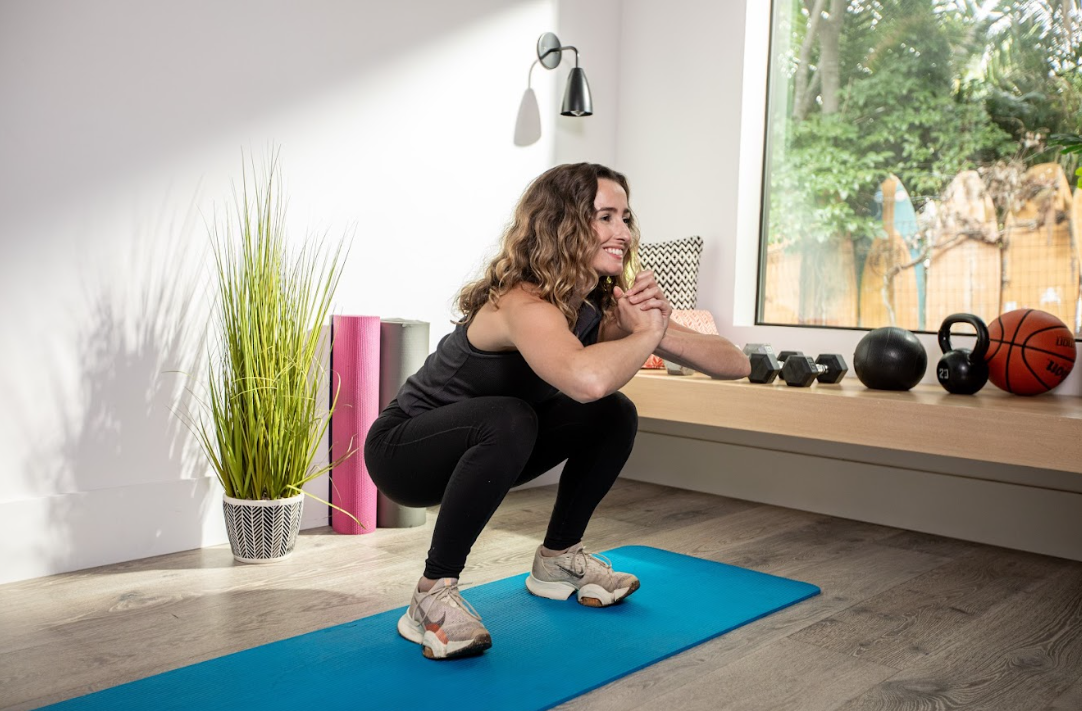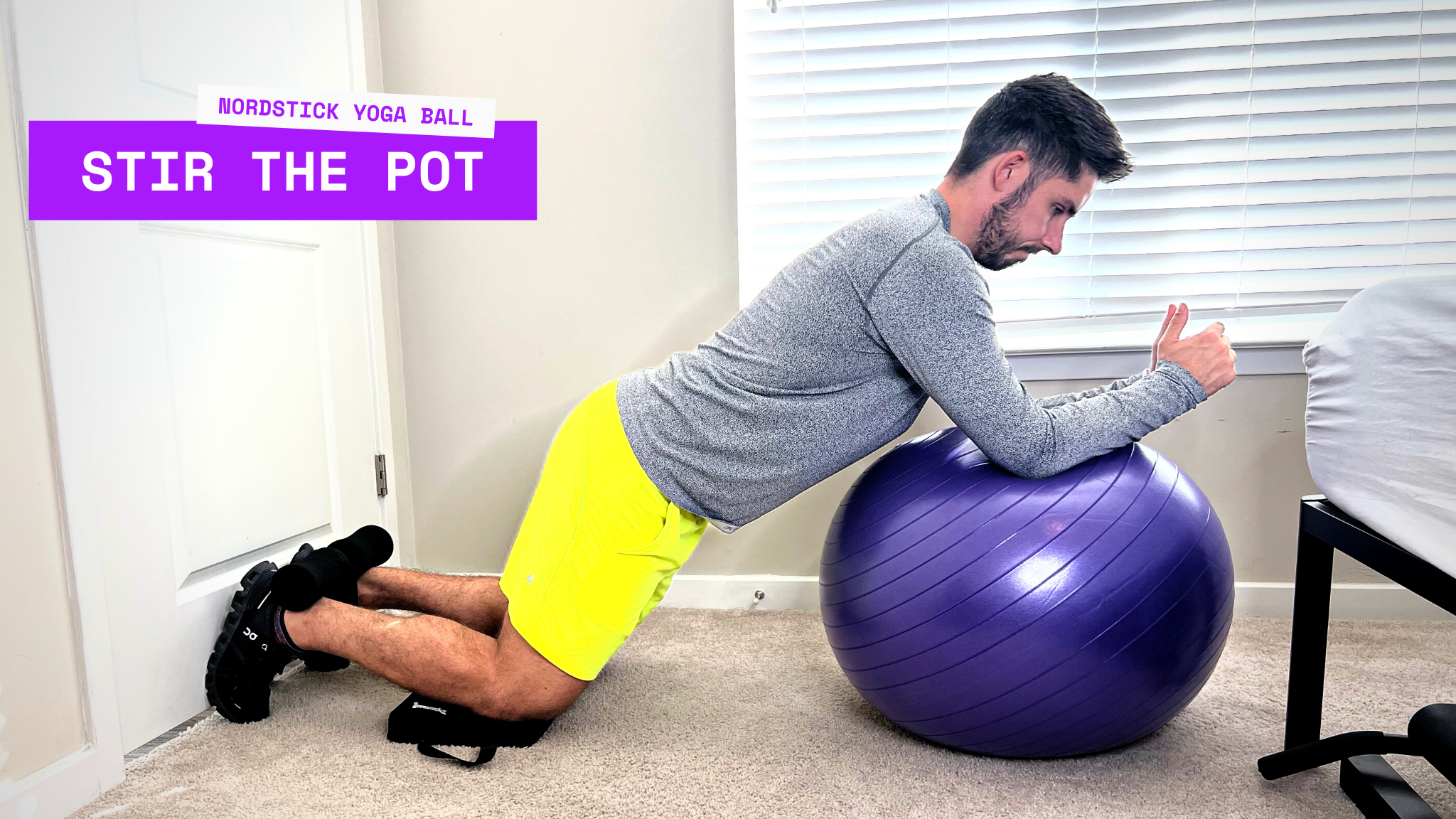Your knees are pivotal, literally and figuratively. They're the workhorses of your body, enabling you to walk, run, jump, and pivot. Yet, they're also one of the most injury-prone joints, vulnerable to both acute injuries and chronic wear and tear. This is why Dr. Garrett Drumheller, PT, DPT, SCS, CSCS, a seasoned sports physical therapist at a distinguished D1 University, crafted the "Knee Strength Revolution." This program isn't just about dodging knee pain; it's about boosting performance and ensuring your knees can withstand life's various hurdles.
Key Takeaways
- Strengthen your knees, protect your joints: These exercises target the muscles around the knees to build strength and stability, reducing the risk of injury.
- No gym needed: Perform these effective knee-strengthening exercises at home with minimal equipment, making it easy to add them to your routine.
- Improve mobility and balance: Regularly incorporating these exercises not only strengthens your knees but also enhances overall lower body mobility and balance.
You can download the complete Knee Strength Revolution program here. It contains 4 weeks' worth of knee exercises that can help strengthen your knees whatever life throws your way. Plus, you can do them all at home!
Why Knee Strength Matters
Importance of Knee Stability
Knee stability is crucial for maintaining balance and preventing injuries. Strong and stable knees support the knee joint, helping you move efficiently and safely. Whether you're running, jumping, or simply walking, knee stability ensures that your movements are controlled and precise.
This reduces the risk of falls and injuries, particularly to the knee joint and surrounding muscles. Additionally, stable knees improve your overall performance in physical activities, allowing you to push your limits without fear of injury.
By focusing on knee stability, you also protect the ligaments and tendons, which are essential for the knee's health and function. Incorporating knee-strengthening exercises into your routine helps build this stability, providing a solid foundation for all your movements and enhancing your overall physical health.
Impact on Physical Performance
Knee strength significantly affects your physical performance across various activities. Strong knees enable you to generate more power during exercises like squats and lunges, enhancing your ability to lift heavier weights and perform more reps.
This strength translates to improved speed and agility, crucial for sports and activities that require quick directional changes, like basketball or soccer. Moreover, knee strength contributes to better endurance; it allows you to sustain activity levels longer without experiencing fatigue or discomfort.
Strengthening exercises targeting the knee joint also help improve coordination and balance, essential for maintaining proper form and preventing injuries. As you build knee strength, you’ll notice increased confidence in your physical abilities, enabling you to tackle new challenges and set higher fitness goals.
By prioritizing knee strength, you’re not just avoiding injury but actively enhancing your overall athletic performance and physical capabilities.
The 5 Knee Strengthening Exercises
Each exercise in the "Knee Strength Revolution" program is designed to build resilience in your knees. Here's a closer look:
1. Nordic Curls with Eccentric Focus
Nordic Curls, with an emphasis on the eccentric phase, are a powerful exercise for bolstering knee strength and stability. This exercise primarily targets the hamstring muscles, which play a vital role in supporting the knee joint.
To perform this exercise, start in a kneeling position with your feet anchored, perhaps using a Nordstick or similar device for support. Slowly lower your upper body towards the ground, allowing gravity to aid the descent while using your hamstrings to control the movement.
This eccentric focus challenges the muscles as they lengthen, boosting strength and endurance. As you return to the starting position, engage your core to maintain balance.
Regularly including Nordic Curls in your routine can significantly enhance knee stability and reduce the risk of injury, helping you maintain robust knee health. This exercise is beneficial for athletes and fitness enthusiasts looking to improve their overall physical performance.
2. Leg Extension with the OmniStrap
Leg extensions using the OmniStrap are excellent for isolating and strengthening the quadriceps, crucial muscles for knee joint support. Begin by sitting with your legs straight and an OmniStrap looped around your left ankle.
Slowly lift your left leg while keeping the knee straight, focusing on engaging the quadriceps. As you lower your leg back to the starting position, maintain control to maximize the benefit.
This exercise not only strengthens the quadriceps but also engages the core for enhanced stability. The added resistance from the OmniStrap intensifies the workout, making it more effective for building strong muscles around the knee. Incorporating leg extensions into your routine can help alleviate existing knee pain by reinforcing the muscles that provide support.
This exercise is particularly beneficial for those looking to improve knee strength and overall leg functionality from the comfort of their home.
3. Air Squats
Air squats are a fundamental exercise for building lower body strength, targeting the quadriceps, hamstring muscles, and calf muscles. To perform this exercise, stand with your feet shoulder-width apart. Lower your body as if sitting back into a chair, keeping your back straight and your knees aligned with your feet.
As you squat, focus on pushing through your heels to engage your thigh muscles effectively. Once you reach the lowest point, return to the starting position by driving through your heels, which helps activate the glutes and maintains balance.
Air squats are versatile and can be easily modified to increase intensity by gradually increasing the squat depth or adding ankle weights. Regularly incorporating air squats into your routine enhances knee stability and boosts overall leg strength, reducing the risk of injury.
This simple yet effective exercise can be performed anywhere, making it an excellent choice for those looking to enhance their lower body strength at home.
4. Prone Hamstring Curls
Lie on your stomach with your legs straight. Use your Omnistrap for added resistance. Slowly bend both knees, bringing your heels toward your buttocks, then slowly straighten your legs back out.
This exercise targets your hamstring muscles, which are vital for knee support and flexibility.
5. Terminal Knee Extensions (TKEs) with the OmniStrap
TKEs focus on strengthening the muscles around the knee, improving stability and function.
Attach the OmniStrap to your door at knee level. Step through the strap so it rests just behind your knee. Start with a slight bend in your knee, then straighten your leg against the resistance.
This exercise is particularly beneficial for engaging the quadriceps in a knee-friendly manner.
Integrating These Exercises into Your Routine
Start with a warm-up to get your muscles ready for action. This can include light jogging, dynamic stretches, or any activity that gently increases your heart rate.
When performing these exercises, focus on form over speed or intensity. Gradual progression is key to building strength without risking further injury. Aim for consistency, incorporating these exercises into your routine 2-3 times a week. And remember, adding light ankle weights or adjusting the resistance band can intensify the workout as your strength improves.
Beyond the Workout: Keeping Your Knees Healthy
To effectively integrate knee-strengthening exercises into your routine, focus on consistency and gradual progression. Start by setting a realistic schedule, aiming to perform these exercises 2-3 times a week.
This frequency helps build strong muscles without overwhelming your body. Emphasize form over speed or intensity to avoid injury and ensure that you are targeting the right muscle groups.
As you become more comfortable with the exercises, consider gradually increasing the resistance or adding ankle weights to enhance the challenge. Track your progress by noting improvements in strength and endurance, which can motivate you to maintain consistency.
Additionally, listen to your body; if you experience knee pain or discomfort, modify the exercise or consult a healthcare professional. By prioritizing consistency and mindful progression, you create a sustainable exercise routine that not only strengthens your knees but also boosts your overall physical performance and resilience.

Conclusion
Stronger knees mean a stronger you. By incorporating these five knee-strengthening exercises into your routine, you're not just working to relieve pain or prevent injury but enhancing your overall quality of life. With commitment and consistency, you'll notice improvements in your knee health and overall physical performance. Start today, and step into a stronger tomorrow.
Download the Knee Strength Revolution program for FREE today, and start building knee resilience and strength from home!









































Leave a comment
This site is protected by hCaptcha and the hCaptcha Privacy Policy and Terms of Service apply.